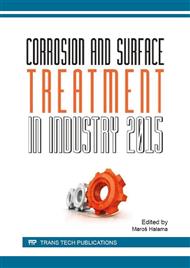p.146
p.153
p.159
p.167
p.172
p.177
p.181
p.187
p.193
The Influence of Ar/N2 Plasma Gases on Microstructure of Ceramic Coatings Produced by PS-PVD Method
Abstract:
The PS-PVD method is a promising technique for production of ceramic coatings from the vapor phase on gas turbine components. The resulting layers combine benefits of coatings made by the plasma spray method and other methods of Physical Vapor Deposition. The plasma spray process is carried out under reduced pressure (~ 200 Pa) and with the use of a gun applied in the method (the LPPS torch 0C3P). The PS-PVD enjoys many of the benefits of plasma spray methods combined with relatively low production costs and overall better properties. One of the significant costs of coating manufacturing by this method is the use of helium as process gas to generate plasma. The authors attempted to form a ceramic coating from ZrO2, where a mixture of argon and nitrogen in various proportions was used. The resulting layers were analyzed by XRD, LFA, SEM-EDS.
Info:
Periodical:
Pages:
187-192
Citation:
Online since:
March 2016
Keywords:
Price:
Сopyright:
© 2016 Trans Tech Publications Ltd. All Rights Reserved
Share:
Citation:


